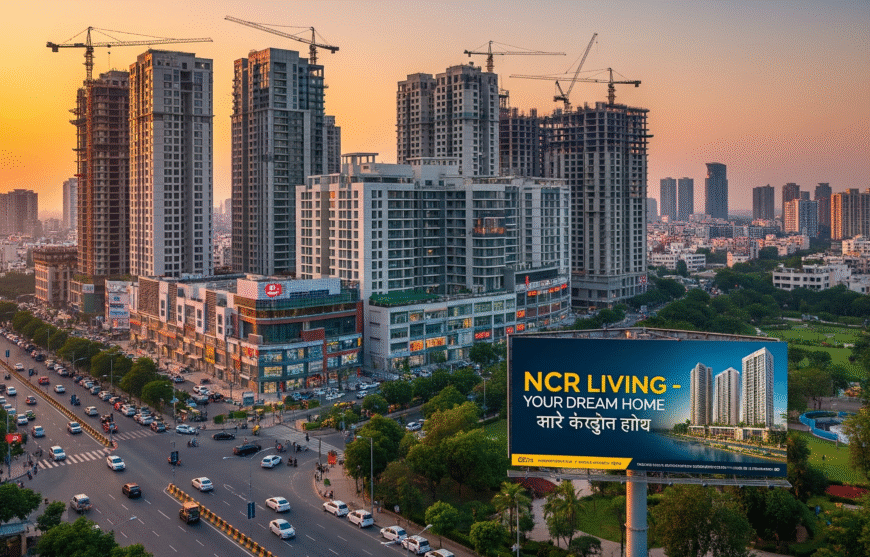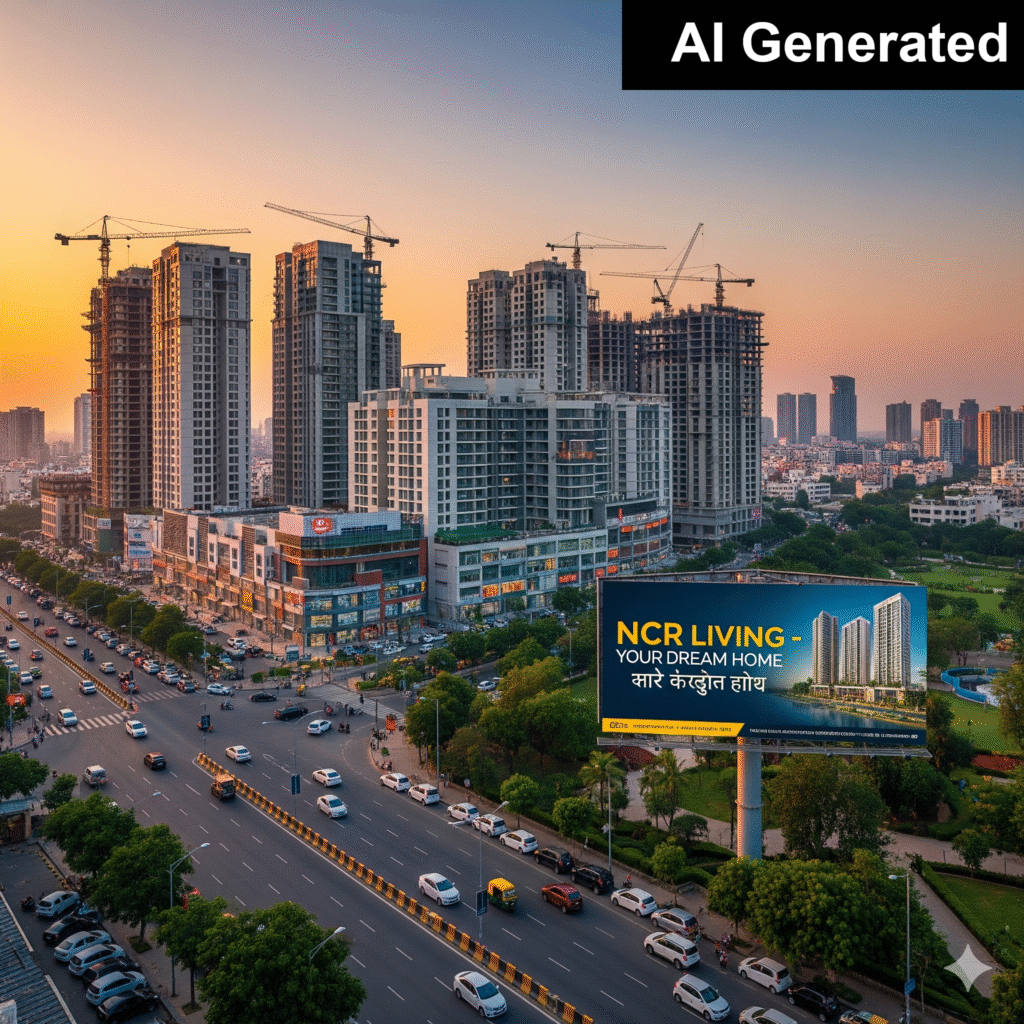The Future is Here: A Look at Indian urban development and Its Impact
Indian Urban Development – The face of India’s real estate sector is changing rapidly. The National Capital Region (NCR) stands as a prime example of this transformation. Experts believe that the region’s property market is being reshaped by large-scale infrastructure and meticulous urban development. This strategic approach to growth is creating new opportunities for everyone—from first-time homebuyers to seasoned investors. The story of NCR’s growth is really the story of a successful model for Indian urban development.
Evidence of this growth is everywhere. Luxury housing sales in Delhi-NCR, for instance, have surged by 9% in the first half of 2025 compared to the previous year. The region now accounts for an incredible 65% of all luxury housing sales in India’s top seven cities. This is a clear indicator of a rising preference for premium amenities and better living standards, which are all part of modern Indian urban development. The share of luxury homes in the total sales has also grown steadily—from 12% in the first half of 2023 to 27% in the first half of 2025. Gurugram has been at the forefront of this trend, contributing 91% of all luxury home sales in the NCR.
Dr. Gautam Kanodia, Founder of KREEVA and Kanodia Group, highlighted how transformative infrastructure projects are driving this new era. Micro-markets like New Gurgaon, SPR Road, and the Dwarka Expressway are seeing heightened interest. This is because of improved connectivity and planned urban development. For developers, the focus has shifted to delivering integrated projects that offer both lifestyle value and strong investment potential. This integrated approach is a defining characteristic of modern Indian urban development.
The long-awaited Dwarka Expressway is unlocking new growth corridors, while the Golf Course Extension and SPR Road are pulling the city outward with seamless residential and commercial pockets. Metro expansions are steadily weaving Noida, Greater Noida, Gurugram, and Delhi into a cohesive urban fabric. The Regional Rapid Transit System (RRTS) corridors also promise to cut travel times dramatically, changing the way people commute and live. These connectivity upgrades are turning once-overlooked zones into high-demand markets. They are multiplying real estate and retail opportunities. Such strategic planning is a cornerstone of responsible Indian urban development.
Driving Force of Indian Urban Development
The retail sector’s growth provides further proof of this momentum. According to CBRE, demand for retail spaces in malls and high streets in NCR rose 25% between January and June. This growth is a result of fresh supply and a growing appetite from retailers. With vacancies at historic lows, the momentum is expected to continue. Pankaj Jain, Founder and CMD, SPJ Group, explained that retail is no longer confined to traditional hubs; it’s moving where the people and opportunities are.
He believes new expressways, metro connectivity, and planned urban clusters are drawing young professionals and families. This translates into fresh demand beyond the saturated core markets. The real opportunity, according to Jain, lies in creating curated retail ecosystems that blend shopping, dining, and experiences. This holistic approach is crucial for sustainable Indian urban development.
In essence, the synergy between infrastructure and real estate is clear. The investments in roads, expressways, and public transport are creating a new urban landscape that is more connected, efficient, and valuable. The rise in luxury housing sales and retail demand is a direct consequence of these efforts. This trend is expected to continue as more projects are completed. Therefore, the future of India’s property market is intrinsically linked to the success of its Indian urban development strategies. This model provides a blueprint for other regions to follow, showing how thoughtful planning can lead to remarkable growth.
Source : IndiaTV


